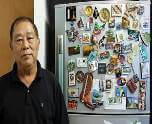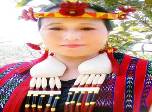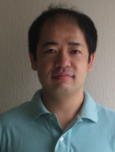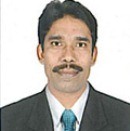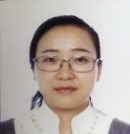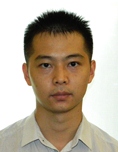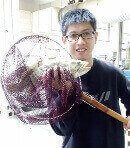Theme: Innovative and Sustainable Aquaculture
Aquaculture Summit 2018
11th Global Summit on Aquaculture & Fisheries cordially invites participants from all over the world to attend this event which is scheduled to be held on May 24-25, 2018 at Osaka, Japan. The Summit will be featuring prompt keynote, Oral and Poster presentations and Exhibitions.
The theme of the conference is “Innovative and Sustainable Aquaculture”
Aquaculture Summit 2018 attempts to unite a distinctive and world-class blend of researchers, scientists, analysts and leaders both from the scholarly community and industry to trade their insight, experience and research advancements on Aquaculture and its associated domain of Fisheries.
Aquaculture is counted to be probably the fastest growing food-producing sector in the world currently. Farming of aquatic organisms including fish, molluscs, crustaceans and aquatic plants under controlled conditions defines Aquaculture. Aquaculture and Fisheries, has gained momentum all over the world as a viable method to produce seafood over the last decade. According to some experts, increasing demand for fresh fish has put a strain on natural populations. Consequently Aquaculture meeting is gaining prevalence in the demand.
Aquaculture Conference offers the following advantages:
o Facilitates effective gathering and discourse among those included in innovative activities in fisheries and aquaculture nationally and internationally as well
o Maximize the interchange of insight, experience and research advancements on the concerned topics which will result in maximum utilization, cultivation, conservation and development of aquatic resources.
o Engage young researchers and scientists to conduct improved studies and researches which will open up new avenues for a better world.
o Attempts to extend cooperation between concerned governmental and non-governmental institutions
o Aims at generating public awareness by discussing various advancements and challenges of the Aquaculture and Fisheries sector and also by promoting innovative products and services via exhibition
Japan because:
Japan, “The Land of the Rising Sun” is an archipelago on the eastern edge of Asia, comprised of four largest islands: Honshu, Hokkaido, Kyushu and Shikoku, which make up about ninety-seven percent of Japan's land area and often are referred to as home islands.
Osaka is a large port city and commercial center on the Japanese island of Honshu. It is the third largest city in Japan and the central metropolis of the Kansai region. It's known for its modern architecture, nightlife and hearty street food. Osaka Castle, Osaka Aquarium Kaiyukan, Sumiyoshi-taisha, Dotonbori are few of Osaka’s numerous points of intrigue.
Saltwater fish cultivating started in Japan in 1927, in the quiet waters of the Seto Inland Sea. Full-scale fish cultivating of marine species started in the mid-1950s, utilizing nets to make counterfeit "swimming pools for fish" in the sea. It was around then that aquaculture procedures became adequately modern to rear fish in pen. Commercial aquaculture production in Japan has grown significantly since the end of the 2ndWorld War and today possesses a critical position in the fisheries sector. Yellowtail and sea bream—two favorites in Japan—are the most important fish farm products. Today, the main challenge producers are encountering is maintaining water quality in marine pens. The pens are located in bays because the water is calm, however the tidal flow is poor and consequently uneaten feed and other wastes can build up and foul the water.
The Aquaculture Summit 2018 aims at taking a step to educate consumers about the future prospective of aquaculture and fishing and risk management, provide solutions to the challenges by discussing about innovative approaches, experiences, research outcomes, services and products related to the concerned issues.
Track 1: Aquafarming
Aquafarming is the cultivating of fish, crustaceans, molluscs, aquatic plants, algae, and other aquatic organisms. It includes developing freshwater and saltwater populaces under controlled conditions, and can appear differently in relation to commercial fishing, which is the reaping of wild fish. On aquafarms, high-volume frameworks control nourishment, light on indoor homesteads, and development incitement. The Food and Agriculture Organization of the United Nations reports that the aquaculture business is growing three times quicker than terrestrial animal horticulture, and aquafarms will without a doubt turn out to be significantly more common as our regular fisheries wind up noticeably depleted.
Related Aquaculture & Fisheries Conferences:
2nd International Exhibition & Conference on Aquaculture & Fisheries for Cambodia, August 02-04, 2017, Cambodia, Myanmar; Aquaculture Conferences 8th ISM International Symposium on Monogenea 2017, August 07-13, 2017, Brno, Czech Republic; Aquaculture Conferences 2018 Northwest Aquatic and Marine Educators (NAME) 2017 Conference, August 07-11, 2017, Homer, Alaska; Aquaculture Congress Aqua Nor 2017, August 15-18, 2017, Trondheim, Norway; Aquaculture Congress 2018 International Conference on Aquaculture, Aquatic Conferences 2018 June 04-06, 2018, Copenhagen, Denmark;
Related Aquaculture & Fisheries Societies:
Middle East Aquaculture Association; Agriculture and aquaculture Hong Kong Association; Alaska Aquaculture Associations
Track 2: Pisciculture
Pisciculture or fish farming includes raising fish in tanks or walled in areas, mostly for sustenance. It is the most significant form of aquaculture, while different techniques may fall under mariculture. Around the world, the most critical fish species utilized as a part of fish farming are carp, tilapia, salmon, and catfish. Fish farms can appear as submerged mesh cages or as solid enclosures in areas ashore. Today, an enormous portion of the fish consumed globally is raised in these artificial environments.
Related Aquaculture & Fisheries Conferences:
12th Shanghai International Fisheries and Seafood Exhibition, August 19-21, 2017, Shanghai, China; Aquaculture Events 147th Annual Meeting of the American Fisheries Society, August 20-24, 2017, Tampa, Florida; Aquaculture Events 2018 3rd International Workshop on Trait-based approaches to Ocean Life, August 20-23, 2017, Bergen, Norway; Aquaculture Meetings 7th International Symposium on GIS/Spatial Analyses in Fishery and Aquatic Sciences, August 21-25, 2017, Hokkaido, Japan; Aquaculture Meetings 2018 AquaVision, Aquatic Conferences June 11-13, 2018, Stavanger, Norway
Related Aquaculture & Fisheries Societies:
Aquaculture Association of Canada; Brazilian Aquaculture Society; Aquaculture Association of Queensland
Track 3: Aquaculture Nutrition
At the point when fishes are kept in aquaculture, it must be ensured that the fish get the supplements they require for development and proper health. Fish meal and fish oil have been the customary beginning stages for good fish feed, since they contain the supplements that fish require. It has turned out to be certain that plant proteins can supplement fish meal, since crude materials from the plant kingdom contain adequate measures of the critical amino acids, which are the building squares of proteins. Fish meal ought to contain significant measures of iodine, selenium and vitamin A.
Related Aquaculture & Fisheries Conferences:
2017 NSW Oyster Conference, August 22-24, 2017, Merimbula, NSW, Australia; Aquaculture Workshops International Aquaculture Technology Expo 2017, August 23-25, 2017, Tokyo, Japan; Aquaculture Workshops 2018 4th Annual International Conference on Fisheries and Aquaculture, August 24-25, 2017,Colombo, Sri Lanka; Fisheries Conferences China International (Guangzhou) Aquaculture Exhibition 2017, August 25-27, 2017, Guangzhou, China; Fisheries Conferences 2018 SeaWeb Seafood Summit, Oceanography Conferences 2018 June 18-20, 2018, Barcelona, Spain
Related Aquaculture & Fisheries Societies:
Aquaculture Association of Canada; Southern Regional Aquaculture Center; Texas Aquaculture Association
Track 4: Aquatic & Marine Pathology
Like humans and other organisms, fish suffer from parasitic infestation and diseases. The defensive mechanisms can be specific and non-specific. Non-specific mechanisms consist of skin and scales, and additionally the mucus layer secreted by the epidermis that traps microorganisms and restrains their growth. On the off chance that pathogens break these defenses, fish can create inflammatory responses that enhance the flow of blood to infected territories and deliver WBCs that attempt to kill the pathogens. Specific defenses are specific reactions to specific pathogens perceived by the fish's body that are adaptive immune reactions.
Related Aquaculture & Fisheries Conferences:
10th Symposium on Diseases in Asian Aquaculture (DAA10), August 28- September 01, 2017, Bali, Indonesia; Fisheries Meetings EIFAAC International Symposium, September 03-06, 2017, Stare Jabłonki, Poland; Fisheries Meetings 201818th International Conference on Diseases of Fish and Shellfish, September 04-07, 2017, Belfast, UK; Fisheries Events, Larvi 2017: 7th Fish & Shellfish Larviculture Symposium, September 04-07, 2017, Ghent University, Belgium; Fisheries Events 2018 Indo Fisheries 2018 Expo & Forum, Marine Biology Conferences 2018 July 04-06, 2018, Jakarta, Indonesia
Related Aquaculture & Fisheries Societies:
Asian Fisheries Society; Malaysian Fisheries Society; Indonesian Aquaculture Society
Track 5: Fish hatchery
A fish hatchery is an area for artificial breeding, hatching and raising through the early life phases of animals, finfish and shellfish in particular. A few fish species that are usually brought up in hatcheries consists of Pacific oysters, shrimp, Indian prawns, salmon, tilapia and scallops. Hatcheries deliver larval and juvenile fish (and shellfish and crustaceans) principally to aid the aquaculture business where they are exchanged to on-growing systems i.e. fish farms to achieve reap estimate.
Related Aquaculture & Fisheries Conferences:
Seafood Expo Asia, September 05-07, 2017, Wanchai, Hong Kong; Fisheries Congress 2018 3rd international UN SDSN Mediterranean Conference, September 07-08, 2017, Athens, Greece; Marine Science Conferences 2018 13th International Coregonid Symposium, September 10-15, 2017, Wisconsin, USA; Marine Science Conferences World Seafood Congress 2017, September 10-13, 2017, Reykjavik, Iceland; Marine Conferences International Summit on Fisheries and Aquaculture, Marine Biology Conferences August 13-14, 2018, Amsterdam, Netherlands
Related Aquaculture & Fisheries Societies:
American Fisheries Society; Florida Aquaculture Association; East Coast Shellfish Growers Association
Track 6: Fish stocking
Fish stocking is the act of rearing fish in hatcheries and discharging them into a waterway, lake, or the sea to make new or supplement existing populaces of threatened or endangered fishes in a waterway shut to angling. Fish stocking can give many advantages, for example, making new fisheries or expanding existing ones and is perceived for its significance to the group regarding quality business, recreational, or tribal angling, conservation purposes, employment and ensuing monetary advantages that have developed in light of the action over numerous years. Protection and conservation of our unique biodiversity should be ensured while fish stocking.
Related Aquaculture & Fisheries Conferences:
7th International Oyster Symposium, September 11-15, 2017, Bangor, UK; Marine Conferences 2018 WAVMA Conference and Annual General Meeting, September 12-14, 2017, Tirgu Mures, Romania; Marine Biology Conferences1st Pacific Seafood & Technology Exposition 2017, September 12-14, 2017, Port Moresby, Papua New Guinea; Marine Biology Conferences 2018 2nd Icelandic Fisheries Conference, September 13-15, 2017, Kópavogur, Iceland; Oceanography Conferences AQUA 2018, Marine Conferences August 25-29, 2018, Montpellier, France
Related Aquaculture & Fisheries Societies:
Kansas Aquaculture Association; Coastal aquaculture society of India; FAO Aquaculture Society
Track 7: Shrimp farming
Shrimp farming is the practice of harvesting shrimp or prawns for human utilization. This can be carried out in marine or freshwater systems. It is an aquaculture business that started in the 1970s, and production developed steeply, especially to coordinate the market requests of the United States, Japan, and Western Europe. Shrimp cultivating has made considerable progress and has changed into a worldwide industry, from the little scale cultivates in Asia and Thailand. There are just a couple of types of shrimp that are cultivated internationally. A standout amongst the most well-known species is the Macrobrachium rosenbergii, the Giant Malaysian Prawn, which is a freshwater prawn, local of South Asia.
Related Aquaculture & Fisheries Conferences:
6th Regional Tuna Industry and Trade Conference, September 13-14, 2017, Port Moresby, Papua New Guinea; Oceanography Conferences 2018 1st Russian Fisheries Forum & Seafood Expo Global, September 14-16, 2017, St.Petersburg, Russia; Aquatic Conferences 71st Annual Shellfish Conference & Tradeshow, September 19-21, 2017, Oregon, USA; Aquatic Conferences 2018 15th Aquacultural Insurance & Risk Management Conference, September 20-22, 2017, Dubrovnik, Croatia; Aquaculture Conferences 8th International Symposium on Aquatic Animal Health, Marine Conferences 2018 September 02-06, 2018, Prince Edward Island, Canada
Related Aquaculture & Fisheries Societies:
U. S. Aquaculture Society; Wisconsin Aquaculture Association; Good Fish Guide Marine Conservation Society
Track 8: Oyster farming
Another noted aquaculture practice is the oyster cultivation where oysters are reared mainly for human consumption. Oyster farming began as early as 1st century BC on the Italian peninsula by the ancient Romans and later developed in Britain too for the purpose of export to Rome. Aquacultured oysters were the main source of oysters for the French oyster industry since the late 18th century. Oysters normally develop in estuarine bodies of salty water. They generally reach market size within 18 months to 2 years
Related Aquaculture & Fisheries Conferences:
PICES 2017 Annual Meeting, September 21-October 01, 2017, Vladivostok, Russia; Aquaculture Conferences 2018Trans-Tasman Rock Lobster Congress 2017, September 23-25, 2017, Hobart, Australia; Aquaculture Congress, American Association of Fish Veterinarians Conference , September 24-25, 2017, Dallas, Texas, USA; Aquaculture Congress 2018 52nd European Marine Biology Symposium, September 25-29, 2017, Portorož, Slovenia; Aquaculture Events 3rd Aquaculture Conference 2018: Recent Advances in Aquaculture Research, Marine Science Conferences, September 25-28, 2018, Qingdao, China
Related Aquaculture & Fisheries Societies:
Arizona Aquaculture Association; Fisheries Society of Nigeria; Fisheries and Aquatic Sciences Association
Track 9: Algaculture
Algaculture is the commercial harvesting of algae. It is a type of aquaculture. A major portion of the algae that are deliberately developed fall into the classification of microalgae, additionally alluded to as phytoplankton, microphysics, or planktonic green growth. Macroalgae, normally known as kelp, additionally have numerous uses, however because of their size and the particular environmental requirements in which they have to develop, they don't lend themselves as promptly to development on an extensive scale as microalgae and are frequently harvested wild from the sea.
Related Aquaculture & Fisheries Conferences:
Third International Symposium on Fisheries Crime, September 25-26, 2017, Vienna, Austria; Aquaculture Events 201824th Annual Cold Harvest Conference and Trade Show, September 26-28, 2017, Canada; Aquaculture Meetings 4th International Exhibition & Conference on Aquaculture & Fisheries Industry for Myanmar, September 27-29, 2017, Yangon, Myanmar; Aquaculture Meetings 2018 Seafood Directions 2017, September 27-29, 2017, Sydney, Australia; Aquaculture Workshops AquaSur 2018, Marine Science Conferences 2018 October 02-05, 2018, Puerto Montt, Chile
Related Aquaculture & Fisheries Societies:
North Central Regional Aquaculture Center; China Society of Fisheries; The World Aquaculture Society
Track 10: Mariculture
Mariculture alludes to the development of marine life forms in seawater, more often than not in protected coastal waters. The cultivation of marine fish is a case of mariculture, thus additionally is the cultivating of marine crustacean, e.g. shrimp, molluscs, e.g. oysters and kelp. Mariculture may comprise of raising the life forms on or in simulated walled in areas, for example, floating fenced areas for salmon and on racks for oysters. For the instance of enclosed salmon, they are fed by the operators and oysters on racks channel feed upon naturally accessible food.
Related Aquaculture & Fisheries Conferences:
Whitefish ShowHow 2017, September 28, 2017, Copenhagen, Denmark; Aquaculture Workshops 2018 Aquaculture Taiwan Expo & Forum, September 28-30, 2017, Taiwan, China; Fisheries Conferences BioMarine Business Convention, October 01-03, 2017, Quebec, Canada; Fisheries Conferences 2018 8th International Conference on Fisheries & Aquaculture, October 02-04, 2017, Toronto, Canada; Fisheries Meetings Latin American & Caribbean Aquaculture 18 (LACQUA18), Marine Science Conferences November 14-17, 2018, Havana, Cuba
Related Aquaculture & Fisheries Societies:
Korean Society of Fisheries and Sciences; European Aquaculture Society; The Washington Fish Growers Association
Track 11: Integrated Multi-trophic Aquaculture
Integrated multi-trophic aquaculture (IMTA) includes developing fed species with extractive species that use the inorganic and organic wastes from aquaculture for their development. It consolidates, in the fitting extents, not only the cultivation of fed aquaculture species with organic extractive aquaculture species but also inorganic extractive aquaculture species to make adjusted frameworks for ecological maintainability, monetary dependability, and social acceptability.
Related Aquaculture & Fisheries Conferences:
10th Indo-Pacific Fish Conference, October 02-06, 2017, Tahiti, French Polynesia; Fisheries Meetings 2018 AquaSG' 17 Conference, October 03-07, 2017, Singapore; Fisheries Events EuroGOOS International Conference: Operational Oceanography serving sustainable marine development, October 03-05, 2017, Bergen, Norway; Fisheries Events 2018Global Aquaculture Alliance GOAL Conference, October 03-06, 2017, Dublin, Ireland; Fisheries Congress 2018 2018 AGU Fall Meeting, Marine Science Conferences 2018 December 10-14, 2018, Washington, D.C., USA
Related Aquaculture & Fisheries Societies:
Ohio Aquaculture Association; Kodiak Regional Aquaculture Association; Health Management in Asian Aquaculture
Track 12: Issues in Aquaculture Netting Materials
Various materials, including nylon, polyester, polypropylene(PP), polyethylene(PE), polyamide(PA), plastic-coated welded wire, rubber, patented rope products, galvanized steel and copper are used for netting in aquaculture fish enclosures around the world. The material strength of net panels made with PA, PP and PE gets reduced when exposed to sunlight (UV), wind, rain, acid rain, etc. Materials being soft can also be damaged by crabs and fish with strong dentations resulting in fish escape from the cage. By inhibiting microbial growth, copper alloy aquaculture cages avoid biofouling costly net changes that are necessary with other materials.
Related Aquaculture & Fisheries Conferences:
17th International Frozen Seafood Products Exhibition: CONXEMAR, October 03-04, 2017, Vigo, Spain; Marine Science Conferences 2018 XIV International Symposium on Aquaculture Nutrition, October 04-06, 2017, Ensenada Baja California, Mexico; Marine Science Conferences 1st International Symposium on Limnology and Freshwater Fisheries, October 04-06, 2017, EÄŸirdir, Turkey; Marine Conferences 2017 MASTS Annual Science Meeting, October 04-06, 2017, Glasgow, UK; Marine Conferences 2018 Fish Passage 2018, Aquaculture Conferences 2018 December 10-14, 2018, New South Wales, Australia
Related Aquaculture & Fisheries Societies:
Aquaculture Nutrition Association; Ecosystem of Fisheries Society; The Australian Society for Fisheries management
Track 13: Fishing Technology
The strategies and the procedure utilized for catching the fishes for various purposes are termed as fishing technology. The term may likewise be applied to techniques for capturing other aquatic animals such as molluscs and edible marine invertebrates. Some of the fishing techniques comprises of hand gathering, spearfishing, netting, angling and trapping. The successful utilization of fishing techniques relies upon knowledge about the fish and their behavior including migration, rummaging and natural surroundings.
Related Aquaculture & Fisheries Conferences:
Our Ocean 2017 conference, October 05-06, 2017, Malta; Marine Biology Conferences 5th EMSEA Conference, October 07-10, 2017, Malta; Marine Biology Conferences 2018 DanFish 2017, October 11-13, 2017, Aalborg, Denmark; Oceanography Conferences Interstate Shellfish Sanitation Conference, October 14-18, 2017, Myrtle Beach, South Carolina, USA; Oceanography Conferences 2018 AQUACULTURE 2019, Marine Science Conferences March 06-10, 2019, Louisiana, USA
Related Aquaculture & Fisheries Societies:
Fishing Technology Association; Society of Fisheries Technologists; Aquaculture Fish Farming Associations
Track 14: Aquaculture Innovations & Designs
Seaward fish ranches are driving the charge with regards to cutting edge aquaculture innovation, procedure and outline. Advancements in research keep on leading to changes in aquaculture generation frameworks, bringing about expanded creation productivity, higher product quality for customers and a more sustainable industry.
Related Aquaculture & Fisheries Conferences:
5th International Conference on Oceanography and Marine Biology, October 16-18, 2017, Seoul, South Korea; Aquatic Conferences Aquaculture Europe 2017, October 17-20, 2017, Dubrovnik, Croatia; Aquatic Conferences 2018International Livestock, Dairy, Meat Processing and Aquaculture Exposition, Indonesia, October 18-21, 2017, Jakarta, Indonesia; Aquaculture Conferences 7th International Conference on Aquaculture & Fisheries, October 19-21, 2017, Rome, Italy; Aquaculture Conferences 2018 AQUACULTURE EUROPE 2019, Marine Science Conferences 2018 October 08-10, 2019, Berlin, Germany
Related Aquaculture & Fisheries Societies:
Aquaculture Association of South Africa; Indiana Aquaculture Association; United States Trout Farmers Association
Track 15: Recirculating Aquaculture Systems
Recirculating Aquaculture Systems (RAS) employ filtration of water from the fish (or shellfish) tanks so it can be reused inside the tank. This drastically decreases the amount of water and space required for intensive generation of seafood products. Solids removal, ammonia removal, Co2 removal and oxygenation are some of the steps that RAS incorporate. Recirculating aquaculture is developing at a decent time to meet market requests for seafood and to serve the changing needs of land-based cultivating operations.
Related Aquaculture & Fisheries Conferences:
9th World Aqua Congress on Aquaculture & Fisheries 2017, October 23-24, 2017, Dubai, UAE; Aquaculture Congress 2018 22nd Biennial Conference on the Biology of Marine Mammals, October 23-27, 2017, Nova Scotia, Canada; Aquaculture Events II International Symposium on Phylogeny and Classification of Neotropical Fishes, October 23-27, 2017, Londrina, PR, Brazil; Aquaculture Events 2018 Aquaculture Vietnam 2017, October 25-27, 2017, Ca Mau City, Vietnam; Aquaculture Meetings World Fisheries Congress 2020, Aquaculture Conferences October 11-15, 2020, Adelaide, Australia
Related Aquaculture & Fisheries Societies:
National Centre for Sustainable Aqua Culture; Ocean SINTEF; Royal Society of Edinburgh Fishing
Track 16: Aquaponics
Aquaponics is basically the blend of aquaculture and hydroponics in a symbiotic environment. The fish waste gives a natural sustenance source to the plants, and the plants actually filter the water for the fish. Ammonia from the fish waste is first converted into nitrites and then to nitrates by the nitrifying bacteria. Additionally, fish waste is converted into vermicompost that acts as a food for the plants.
Related Aquaculture & Fisheries Conferences:
7 th International Conference of Aquaculture Indonesia 2017 (ICAI 2017), October 26-29, 2017, Solo, Indonesia; Aquaculture Meetings 2018 Association of Scottish Shellfish Growers' Annual Conference, October 26-27, 2017, Oban, Scotland; Aquaculture Workshops 11th Annual Algae Biomass Summit, October 29 - November 01, 2017, Salt Lake City, Utah; Aquaculture Workshops 2018 71st SEAFWA Annual Conference, Aquaculture Conferences 2018 October 29-November 1, 2017, Louisville, Kentucky
Related Aquaculture & Fisheries Societies:
Hawaii Aquaculture and Aquaponics Association; Freshwater Fish Seed Resources Association; Central Marine Fisheries Society
Track 17: Aquaculture Resource Management
The effective and efficient utilization of the available resources pertaining to aquaculture is referred to as aquaculture resource management. It is required keeping in mind the end goal to decide the best maintainable yield of market-sized animals within a given time period. Such management is required to employ utilization of financial information and ecosystem services valuation philosophies alongside past researches.
Related Aquaculture & Fisheries Conferences:
Tenth WIOMSA Scientific Symposium, October 30-November 4, 2017, Dar es Salaam, Tanzania; Fisheries Conferences Thirteenth Medcoast Congress on Coastal and Marine Sciences, Engineering, Management & Conservation (Medcoast 17), October 31-November 4, 2017, Malta; Fisheries Conferences 2018 2017 Albemarle-Pamlico Ecosystem Symposium, November 01, 2017, Raleigh, North Carolina, USA; Fisheries Meetings China Fisheries and Seafood Expo / Aquaculture China and Seafood Technology, Aquaculture Conferences November 01-03, 2017, Qingdao, China
Related Aquaculture & Fisheries Societies:
Ecosystem of Fisheries Society; Society of Aquaculture Professionals; Spanish Aquaculture Association
Track 18: Aquaculture Engineering
Aquaculture engineering aims to provide solutions to technical problems related with harvesting of aquatic vertebrates, invertebrates, and algae. Design and development of the field not only requires knowledge of mechanical, biological and environmental systems but also of material engineering and instrumentation. Solutions from wastewater treatment, fisheries, and traditional agriculture additionally aid in engineering techniques.
Related Aquaculture & Fisheries Conferences:
Aquaponics Association 2017 Conference, November 03-06, 2017, Oregon, USA; Fisheries Meetings 2018 Latin American & Caribbean Aquaculture 17 (LACQUA17), November 07-10, 2017, Mazatlan, Mexico; Fisheries Events8th EXPO PESCA & ACUIPERU, November 08-10, 2017, Lima, Peru; Fisheries Events 2018 Busan International Seafood & Fisheries EXPO 2017, Aquaculture Conferences 2018 November 08-10, 2017, Busan, South Korea
Related Aquaculture & Fisheries Societies:
Society of Aquaculture Professionals, India; Maine Aquaculture Association; Missouri Aquaculture Association
Track 19: Aquatic Physiology
Aquatic physiology studies the morphology and function of the various parts of the organisms inhabiting the aquatic ecosystem. The effect of environmental stress conditions on the aquatic inhabitants can be studied with the help of structural and physiological information obtained from this field of study.
Related Aquaculture & Fisheries Conferences:
International Cold Water Prawn Forum (ICWPF), November 09, 2017, Reykjavik, Iceland; Fisheries Congress 2018 10th International Flatfish Symposium, November 11-16, 2017, Saint-Malo, France; Marine Science Conferences 2018 9th Symposium on Harmful Algae in the US, November 11-17, 2017, Baltimore, Maryland, USA; Marine Science Conferences Virginia Aquaculture Conference, Aquaculture Conferences November 17-18, 2017, Virginia, USA
Related Aquaculture & Fisheries Societies:
Sri Lanka Food and Aquaculture Organization; European Offshore Mariculture Society; Taxonomy Aquaculture Research Society
Track 20: Aquatic Plant farming
A method of cultivating aquatic plants in water comprises of aquatic plant farming. Such plants are fundamental to a healthy aquatic ecosystem. They can act as a source of sustenance for fishes and also provide oxygen. Floating aquatic plants shut out sunlight from reaching the rest of the water column which in turn limits the growth of other aquatic plants and can also regulate the amount of oxygen so that the fish can breathe.
Related Aquaculture & Fisheries Conferences:
Aquaculture Innovation Workshop 2017, November 29-30, 2017, Vancouver, Canada; Marine Conferences BIOTECHNOLOGY HAVANA 2017, December 03-06, 2017, Varadero, Cuba; Marine Conferences 2018 Australian Shellfish Reef Restoration Network Meeting & 19th International Conference on Shellfish Restoration, December 04 –06, 2017, SA, Australia; Marine Biology Conferences 68th Annual Northwest Fish Culture Concepts workshop, Aquaculture Conferences 2018 December 05-07, 2017, California, USA
Related Aquaculture & Fisheries Societies:
Aquaculture Seafood Network Information Society; Aquaculture Fin Fish Species Center; Aquacare Environment Inc
Track 21: Marine Biology
The sub-discipline of biology concerned with the study of all life forms that inhabit oceans and freshwater of the earth is known as marine and aquatic biology. Life forms possess morphological and anatomical adaptations that empower them to live and flourish in aquatic habitats. Scientific investigations inherent to this field often analyze the human impact on and interaction with aquatic systems and range from the molecular level of contaminants to the stresses on entire ecosystems.
Related Aquaculture & Fisheries Conferences:
2017 Alaska Young Fishermen’s Summit, December 06–08, 2017, Anchorage, Alaska; Marine Biology Conferences 2018 International Meeting On Aquaculture & Fisheries, December 06-07, 2017, Dubai, UAE; Oceanography Conferences Fifth International Conference on Agriculture & Fisheries; Oceanography Conferences 2018 Systems & Technology 2017, December 08-09, 2017, Colombo, Sri Lanka; Aquatic Conferences 2017 AGU Fall Meeting, Marine Science Conferences December 11-15, 2017, New Orleans, USA
Related Aquaculture & Fisheries Societies:
National Geographic Society; Private Nonprofit Aquaculture Associations; Aquaculture Association of North America
Track 22: Socioeconomics of Fisheries & Aquaculture
One of the fastest developing food-producing sectors is Aquaculture, and as of now contributes about 40% of the world supply of fish and other aquatic organisms. The advantages of the development are no doubt genuine and unmistakable for both producing countries and for consumers in the form of lower prices. Ideally it is likely to be able to attach a monetary value to the ecological effects of aquaculture, and in a few occurrences this is conceivable where a quantifiable impact on creation can be distinguished.
Related Aquaculture & Fisheries Conferences:
ICAR-CMFRI 2nd Symposium of SAFARI, January 15-17, 2018, Kochi, India; Aquatic Conferences 2018 International Conference on Sustainable Global Aquaculture (ICSGA 2018), January 24-26, 2018, Bangkok, Thailand; Aquaculture Conferences 21st India International Seafood Show, January 27-29, 2018, Goa, India; Aquaculture Conferences 201878th Midwest Fish & Wildlife Conference, Marine Science Conferences 2018 January 28-31, 2018, Milwaukee, Wisconsin
Related Aquaculture & Fisheries Societies:
Aquaculture association in Tutka; Frontpage European aquaculture Association; Aquaculture Economics & Management Society
Track 23: Sustainability in Aquaculture Practice
Growing concern over the environmental impact of aquaculture, in any case, has incited an analysis for an administration structure that can ensure supportability – that is, a fiscally reasonable aquaculture industry in which the ecological harm is limited. Sustainable aquaculture is a dynamic idea and the supportability of an aquaculture framework will fluctuate with species, area, societal standards and the state of information and innovation.
Related Aquaculture & Fisheries Conferences:
2018 Ocean Sciences Meeting, February 11-16, 2018, Portland, Oregon, USA; Aquaculture Congress AQUACULTURE AMERICA 2018, February 19-22, 2018, Las Vegas, Nevada, USA; Aquaculture Congress 2018 10th Euro-Global Summit on Aquaculture & Fisheries, March 05-06, 2018, Paris, France; Aquaculture Events 13th North Atlantic Seafood Forum, Aquaculture Conferences March 06-08, 2018, Bergen, Norway
Related Aquaculture & Fisheries Societies:
Aquaculture Nutrition Association; Prince William Sound Aquaculture Corporation; NSERC Canadian Integrated Aquaculture Association
Track 24: Captive Fishing
Captive fishing, also known as wild fishing is exploitation of aquatic organisms without stocking the seed. This often exists in the sea, rivers, reservoirs, continental shelves, around coasts, etc. Fish yield decreases gradually in capture fisheries due to indiscriminate catching of fish including brooders and juveniles. Captive Fishing and their subsequent re-introduction of an endangered species is an essential and in some instances a quite successful method for conservation of such species.
Related Aquaculture & Fisheries Conferences:
Aquaculture Middle East, March 06-08, 2018, Dubai, UAE; Aquaculture Events 2018 Seafood Expo / Seafood Procession North America, March 11-13, 2018, Boston, Massachusetts, USA; Aquaculture Meetings Oceanology International 2018, March 13-15, 2018, ExCeL, London; Aquaculture Meetings 2018 110th Annual Meeting of the National Shellfisheries Association, Aquaculture Conferences 2018 March 18 - 22, 2018, Seattle, Washington, USA
Related Aquaculture & Fisheries Societies:
Chignik Regional Aquaculture Association; Oregon Aquaculture Association; Cook Inlet Aquaculture Association
Track 25: Aquaculture laws & regulations
Developing and implementing policies that enable marine aquaculture and works to ensure that aquaculture complies with existing federal laws and regulations are a very essential step in the field of aquaculture. Such policies and regulations ensure environmental protection, water quality, food safety, increase efficiency, transparency, and predictability in making permit decisions and protection of public health.
Related Aquaculture & Fisheries Conferences:
Victam International B.V., March 27-29, 2018, Bangkok, Thailand; Aquaculture Workshops, 43rd Eastern Fish Health Workshop, April 03-07, 2018, Chattanooga, Tennessee, USA; Aquaculture Workshops 2018 International Conference on Marine Ecosystem Assessment for the Southern Ocean, April 09-13, 2018, Tasmania, Australia; Fisheries Conferences 36th Annual Salmonid Restoration Conference, Aquaculture Conferences April 11-14, 2018, Fortuna, California
Related Aquaculture & Fisheries Societies:
Aquaculture UF/IFAS Association; Colorado Aquaculture Association; Connecticut Aquaculture Association
Track 26: Fisheries Ecology & Management
Fisheries ecology and management employs mechanisms that regulate fish populations, food webs, and community structure and dynamics. Pollution and global warming have been the predominant causes of unprecedentedly low fish stocks in recent years. Fish communities can be altered in a number of ways which affects predator and prey dynamics.
Related Aquaculture & Fisheries Conferences:
Aquaculture Asia, April 19-21, 2018, Kuala Lumpur, Malaysia; Fisheries Conferences 2018 Asia Pacific Aquaculture 2018, April 23-26, 2018, Taipei, Taiwan; Marine Science Conferences 2018 Seafood Expo Global, April 24-26, 2018, Brussels, Belgium; Marine Science Conferences 4th World Conference on Marine Biodiversity, Aquaculture Conferences 2018 May 13-16, 2018, Québec, Canada
Related Aquaculture & Fisheries Societies:
Aquaculture Development Association of Zambia; Aquaculture Association of Trinidad; California Aquaculture Association
Track 27: Biotechnology & Genetics in Aquaculture, Fisheries
For the purpose of sustainable development of aquaculture and fisheries, biotechnology proves to be a very effective tool. The combination of genetic alteration and biotechnology to expand the production of aquatic species, embraces incredible potential to take care of demand as well as to ameliorate aquaculture. Researchers are exploring genes that might enhance the generation of natural fish growth factors and additionally, the natural defense compounds marine living beings utilize to battle microbial contaminations.
Related Aquaculture & Fisheries Conferences:
Tuna Conference, May 21-24, 2018, Lake Arrowhead, California; Marine Conferences Aquaculture UK 2018 Exhibition, May 23-24, 2018, Scotland, UK; Marine Conferences 2018 Asia-Pacific Aquaculture Expo, June 01-03, 2018, Fujian Province, China; Marine Biology Conferences XVIIIth International Symposium on Fish Nutrition and Feeding (ISFNF), Aquaculture Conferences June 03-07, 2018, Gran Canaria, Spain
Related Aquaculture & Fisheries Societies:
Aquaculture Council-PennAg Industries Association; Shrimp Aquaculture Association; Egyptian Aquaculture Society
About Aquaculture:
Breeding, rearing, and harvesting of life forms, mainly animals and plants in freshwater or saltwater under controlled conditions comprises of Aquaculture practice. Farming of all kinds of freshwater and marine species of fish, shellfish, and plants takes place in this practice. It also involves the production of seafood from hatchery fish and shellfish which are raised up to market size in ponds, tanks, cages, or raceways. Production of ornamental fish for the aquarium trade, and growing plant species which can be utilized in a range of food, medicinal, nutritional, and biotechnological products is also a part of aquaculture.
Scope and Importance of Aquaculture:
Throughout the world, the demand for seafood has seen a sharp rise accounting to the fact that people have realized that seafood as a part of daily diets prove to be healthier and assist in combating cardiovascular diseases, cancer, Alzheimer’s and many such major ailments. Aquaculture will facilitate availability of wild seafood and make it cheaper and accessible to all including regions where dependency on imported seafood products predominates. From farmers to fish processors and retailers, — more than 100 million people rely on the aquaculture business for sustaining themselves. Regions with poor soils and farming lands also engage in aquaculture as a form of agriculture. Aquaculture Conference attempts to unite a distinctive and world-class blend of researchers, scientists, analysts and leaders to trade their insight, experience and research advancements which will attempt to educate consumers, provide solutions, innovative approaches and promote services and products related to Aquaculture and Fisheries.
Why Osaka, Japan:
Japan, “The Land of the Rising Sun” is comprised of four largest islands: Honshu, Hokkaido, Kyushu and Shikoku, which make up about ninety-seven percent of Japan's land area and often are referred to as home islands. Osaka is a large port city and commercial center on the Japanese island of Honshu. It is the capital city of Osaka Prefecture and the largest component of the Keihanshin Metropolitan Area. Situated at the mouth of the Yodo River on Osaka Bay, Osaka is the second largest city in Japan by daytime population and the third largest city by nighttime population, serving as a major economic hub for the country.
Japan being an island nation has a population of 128 million, a coastline of 29 751 km and an EEZ of approximately 4.05 million km², which is the sixth largest in the world. A combination of warm and cold currents flows along the coasts, thereby creating one of the most abundant fishing zones in the world. Due to such geographical features, fisheries traditionally play a crucial role in food security in Japan, providing a diversified range of fish and fishery products which accounted for 61.2 kg per capita annual intake of the Japanese nation in 2005. The total fishery production of Japan was 5 million tonnes (excluding seaweed) in 2007, out of which 766 000 tonnes were derived from aquaculture. Japan accounted for the fifth largest capture fishery producer in the world in 2007.
Japan Fisheries Research and Education Agency, National Fisheries University of Japan, National Research Institute of Aquaculture, National Research Institute of Fisheries Science, National Research Institute of Far Seas Fisheries, National Research Institute of Fisheries and Environment of Inland Sea are some of the leading institutions devoted to maximize research and development on Aquaculture and Fisheries.
Members Associated with Aquaculture and Fisheries:
There are 500,000 aquaculture and fisheries professionals members from all over the globe. In addition to eminent scientists from across 110 countries, Directors & CEO’s, Executives, Researchers, Post Docs, Fisheries Research Technicians, Fisheries biologists are also involved in various fisheries and aquaculture activities worldwide.
Institutions Associated with Aquaculture and Fisheries Research:
- Andalusian Center for Marine Science and Technology, Spain
- Bureau of Fisheries and Aquatic Resources, Philippine
- Central Institute of Brackishwater Aquaculture, India
- Chinese Academy of Fishery Sciences, China
- Central Marine Fisheries Research Institute, India
- Fisheries Research Services Marine Laboratory, Scotland
- Institute of Ocean Sciences, Canada
- International Council for the Exploration of the Sea, Denmark
- Korea Institute of Maritime and Fisheries Technology, South Korea
- Marine Institute, Ireland
- Norwegian Institute of Marine Research, Norway
- Southeast Asian Fisheries Development Center, Thailand
Research Institutes of Fisheries and Aquaculture

Societies of Aquaculture and Fisheries:
- Asian Fisheries Society
- Malaysian Fisheries Society
- Vietnam Fisheries Society
- World Aquaculture Society
- Fisheries Society of Nigeria
- American Fisheries Society
- Society of Fisheries Technologists (India)
- United States Aquaculture Society
- Indonesian Aquaculture Society
- European Aquaculture Society
- Egyptian Aquaculture Society
- Spanish Society of Aquaculture
Universities of Aquaculture and Fisheries:
- Agricultural University of Norway, Norway
- Auburn University, United States.
- Brunswick Community College, United States
- Deakin University, Victoria
- Delaware State University, United States
- Flinders University, Australia
- Heriot-Watt University, United Kingdom
- Hofstra University, United States
- Humboldt State University, United States
- James Cook University, Australia
- Kentucky State University, United States
- Malaspina University-College, Canada
- Mansfield University, United States
- Memorial University, Canada
- National Fisheries University, Japan
- Northern Territory University, Australia
- Rhodes University, South Africa
- Southern Illinois University, United States
- State University of Ghent, Belgium
- Shanghai Ocean University, China
Various associations worldwide linked to Aquaculture & Fisheries

Market Value of Aquaculture and Fisheries:
The commitment of aquaculture to the world aggregate fish generation achieved 43.1%, up from 42.1% of every 2012. It was just 30.6% 10 years back in 2003. In the interim, worldwide generation of oceanic plants, for the most part kelp, is still overwhelmingly commanded by aquaculture (95.5% of every 2013). World aquaculture production kept on developing in 2013, achieving 97.2 million tons (live weight) with an expected estimation of USD157 billion. A sum of 575 sea-going species and species raised in freshwater, seawater and salty water have been enrolled in the FAO Global Aquaculture Production insights database. The generation of cultivated food fish (finfish, scavangers, molluscs and other oceanic creatures) was 70.2 million tons in 2013, up by 5.6% from 66.5 million tons in 2012. The generation of 27 million tons of cultivated aquatic plants was a 13.4% bounce on the 23.8 million tons of 2012.
World Production in Aquaculture and Captive Fisheries

Statistics of Marketers, Researchers and Academicians associated with Aquaculture & Fisheries:
Aquaculture 2018 conference aims to unite renowned scientists, executives, young researchers, technicians, industrial delegates and talented student communities from the field of aquaculture and fisheries under a single roof to facilitate networking and global partnering for the purpose of aggravating future research. Following are the areas for targeting the audience from Osaka, Japan:
Researchers 1200
Student 1500
Academia 300
Technicians 700
Osaka Researchers and Professionals

Conference Highlights
- Aquafarming
- Pisciculture
- Aquaculture Nutrition
- Aquatic and Marine Pathology
- Fish hatchery
- Fish stocking
- Shrimp farming
- Oyster farming
- Algaculture
- Mariculture
- Integrated Multi-Trophic aquaculture
- Issues in Aquaculture Netting Materials
- Fishing Technology
- Aquaculture Innovations and Designs
- Recirculating Aquaculture Systems
- Aquaponics
- Aquaculture Resource Management
- Aquaculture engineering
- Aquatic Physiology
- Aquatic plant farming
- Marine Biology
- Socioeconomics of Fisheries and Aquaculture
- Sustainability in Aquaculture Practice
- Captive Fishing
- Aquaculture laws and regulations
- Fisheries Ecology and Management
- Biotechnology and Genetics in Aquaculture and Fisheries
To share your views and research, please click here to register for the Conference.
To Collaborate Scientific Professionals around the World
| Conference Date | May 24-25, 2018 | ||
| Sponsors & Exhibitors |
|
||
| Speaker Opportunity Closed | Day 1 | Day 2 | |
| Poster Opportunity Closed | Click Here to View | ||
Useful Links
Special Issues
All accepted abstracts will be published in respective Our International Journals.
- Journal of Aquaculture Research & Development
- Fisheries and Aquaculture Journal
- Journal of Fisheries & Livestock Production
Abstracts will be provided with Digital Object Identifier by


